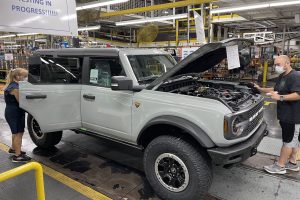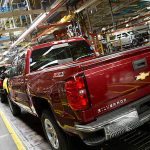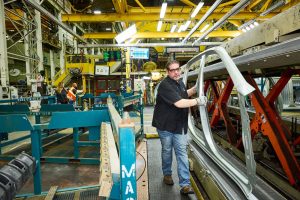Sluggish Bronco sales have Ford reducing production of the once-hot-selling SUV while “reassigning” 400 workers related to the move. Additionally, the company is cutting 14% of its European workforce due to slow sales and other issues.

Sluggish Bronco sales have Ford reducing production of the once-hot-selling SUV while “reassigning” 400 workers related to the move.
Bronco sales fell 18.5% during the third quarter and are down 15.9% through the first three quarters of the year. Ford’s overall SUV sales were down 9% for Q3 and 0.7% for the first three quarters of 2024.
Automotive News reported Ford informed workers in a memo earlier this week about the push to reduce the Bronco line rate to align it more closely with the demand for the vehicle. That move will happen early next year. At the same time, about 400 workers will be relocated from Michigan Assembly Plant to two nearby plants to ensure there are no layoffs.
The line rate adjustment comes in January when the plant building Broncos changes over for the new model-year version of the SUV. The plant also builds the Ranger midsize pickup and will remain on a three-crew rotation.
More changes
Like many of its rivals, Ford is looking to cut costs as electric vehicle sales slow to more manageable rates. As a result, the automaker plans to cut about 14% of its workforce, or 4,000 people, in Europe due slow EV sales. Through September this year, Ford’s sales in Europe fell 17.9%, far outstripping an industrywide decline of 6.1%.
Germany will face the brunt of the cutbacks with about 2,900 workers being let go. The company said it would reduce production of its Explorer and Capri EV models at its Cologne plant in Germany.
An additional 800 workers will leave in the U.K. with 300 more losing jobs around Europe, Reuters reported. The layoffs will occur over the next three years, winding up by the end of 2027.
Ford also made 750 temporary layoffs at the Rouge Electric Vehicle Center in Dearborn, Michigan this month, following other cuts earlier in the year at the facility which assembles the F-150 Lightning.

The company said it would reduce production of its Explorer and Capri EV models at its Cologne plant.
The cuts are intended to be temporary, aimed at reducing inventory of the slow-selling electric pickup. But observers fear they could be extended if demand doesn’t improve, and inventories remain bloated.
Industry trend
The job cuts cannot be a surprise as automakers around the world have announced cuts in recent weeks. General Motors, despite its strong third quarter results, said last Friday that it is eliminating 1,100 jobs, most of them at its technical center in Warren, Michigan. It was the second GM layoff of more than 1,000 employees in recent weeks.
Stellantis has been especially hard hit with job cuts, including the Toledo South Assembly Plant, where the Jeep Gladiator pickup is produced. With sales down its second shift is being dropped, resulting in an estimated 1,100 layoffs. Another 343 jobs were lost at the adjacent Toledo Assembly Complex earlier this year
The company plans to eliminate another 1,100 employees at the Warren, Michigan truck plant were sidelined when production of the Ram 1500 Classic was halted. Stellantis has cut at another Ram plant in Sterling Heights, Michigan, at a Detroit parts facility, at the Grand Cherokee plant — and it announced in July a “voluntary separation program,” a buyout, for salaried U.S. workers.
More Ford Stories
- Ford Paying Near-Record Fine for Mishandled Recall
- Ford Raises “Significant” Safety Concerns Over Fuel Leak
- Ford Shifts EV Plans
Biggest changes
Nissan announced the biggest single cut when its chief executive declared Nov. 7 that the company would switch to “emergency mode.” In the process, said CEO Makoto Uchida, it will cut 9,000 jobs.
The company also announced plans to reduce global production by 20% and even the executive team is feeling the pinch, reducing its salaries until the crisis is resolved.
Those are just a few of the actions the company is taking to cut costs by $2.6 billion in the wake of massive losses through the first six months of the company’s fiscal year — losses driven by slow sales in China and the U.S.
Nissan’s global sales fell 3.8% to 1.59 million vehicles for the first half of the financial year. The decline came as a result of losses in the company’s two biggest markets. Sales dropped 14.3% in China while U.S. sales fell almost 3% to about 449,000 vehicles. The two markets combined make up nearly half of Nissan’s global sales by volume.








0 Comments